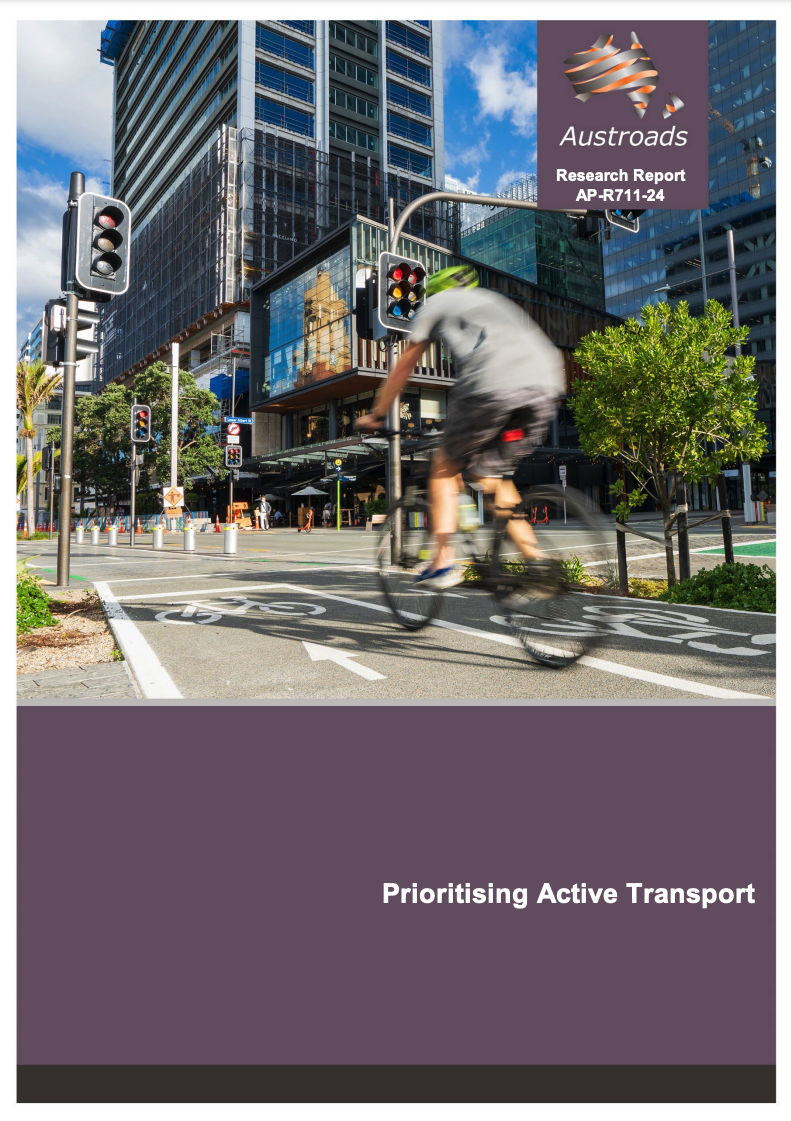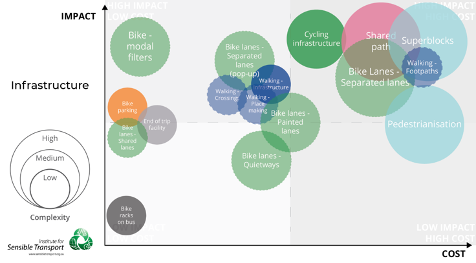Increasing Active Transport Mode Share
Commissioned by Austroads, this project focused on evaluating the effectiveness of different interventions to increase active transport mode share in both Australia and New Zealand.
Location
Australasia
Budget
$120,000
Commencement
2023
Completion
2024
Overview
This report provides coverage of interventions effective in growing active transport mode share.
A prioritisation framework was developed to select the interventions that are most impactful in boosting active transport mode share. Significant increases in mode share are likely to require ambitious initiatives. Two decades of policy support for increasing active transport mode share may have stopped or slowed falls in walking and cycling levels but has not yet succeeded in achieving widespread and large increases.
In addition to impact, an intervention’s cost, and complexity was also included within the prioritisation framework. For each of the prioritised actions, guidance on their suitability to different geographical contexts has been offered (e.g. inner city, suburban, regional etc.)
This report has found that to grow active transport mode share, a mix of interventions is required, including those that reduce or remove current incentives that encourage car use alongside interventions designed to encourage walking and cycling.
Increasing active transport mode share
Across Australasia, an increasing number of state and local governments have identified the need to reduce car use and increase walking and cycling levels. Despite this interest, transport data shows that there are no widespread or sustained increases in active transport mode share in Australasia. This project principally focuses on interventions to grow active transport and provides coverage of the effectiveness of different intervention types to increase walking and cycling mode share. Importantly, these interventions cover both incentives (measures intended to make active transport more convenient, safer etc) as well as disincentives for car use (e.g. car parking management, road user pricing). Consideration of both incentives and disincentives emerged as critically important when seeking to grow active transport mode share. The review of the literature and the subject matter expert interviews conducted for this project both found that without the application of both incentives and disincentives, active transport mode share is unlikely to increase.






What we did
This report has used a prioritisation framework to assess the broad list of interventions intended to boost active transport mode share, to arrive at those most effective in terms of their:
- impact on active travel behaviour
- impact on safety
- complexity, technical difficulty and political difficulty
- cost to government, including consideration of both upfront and ongoing costs.
Detailed coverage of the prioritised actions is provided in this report, including some guidance on the geographic suitability of the different interventions. This coverage is designed to reduce pressure on agencies to undertake guidance development and seeks to avoid duplication. The results are intended to provide a practical tool to inform practitioners on which initiatives are most appropriate when seeking to increase active transport mode share. The figure below illustrates the different categories of interventions included in the report. The pyramid also shows how some intervention categories can be implemented within a matter of months, while others require years or decades to take effect.
Variables included in the prioritisation framework
Impact, Complexity and Cost are the three key variables used in the prioritisation framework. A total of 168 documents (peer-reviewed and grey literature) were used to create a database of intervention types. Researchers have used a variety of different outcome metrics to express the impact of different interventions. As a consequence, this report has harmonised the diversity of factors researchers and government reports have used when describing the impact of different interventions. For comparative analysis, this report collates studies that share similar metrics within each layer of the pyramid shown above. For example, all the studies reporting their effects on the mode share within a layer of the pyramid are compared together and categorised into “Low”, “Medium”, and “High” categories. This similar approach is also employed for other assessments of impact with other metrics, such as time spent in active travel. The factors considered in the prioritisation framework are shown conceptually below.
Results
Each of the interventions evaluated for their effectiveness of increasing active transport mode share were presented in a graph that depicted their impact, cost and complexity. This is designed to help policy makers decide which interventions are worth investing in. It it important to note that the most effective interventions are ones that simultaneously make driving less competitive and active transport more convenient and safer.
The results for the infrastructure interventions are shown below.

 More info about this project
More info about this project

